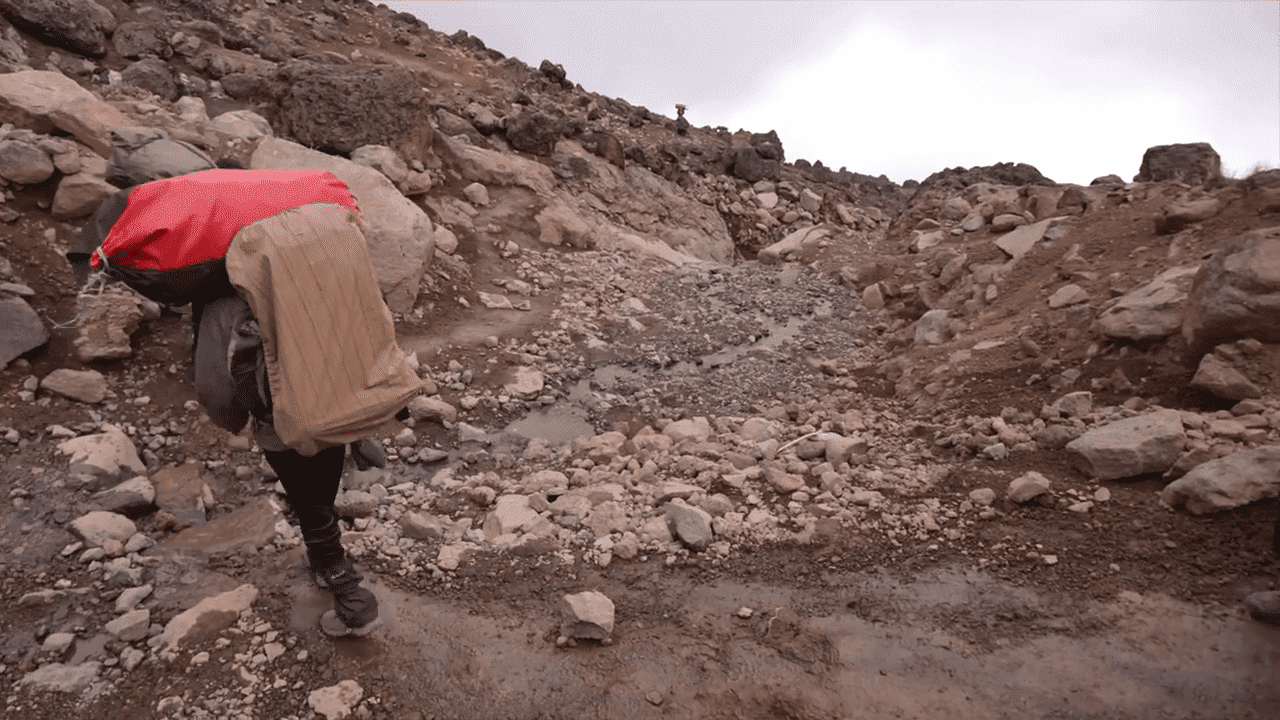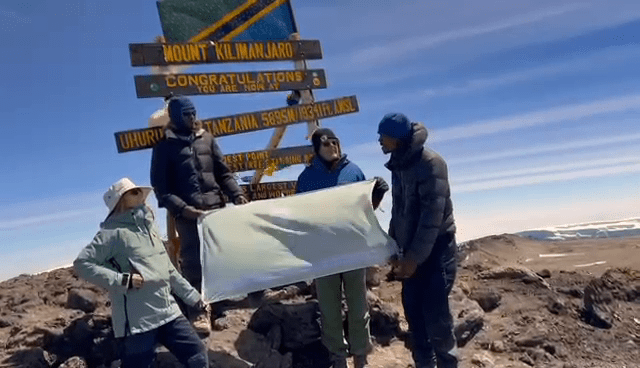Is Altitude Sickness a Concern When Climbing Kilimanjaro Without a Guide?

Introduction: The Hidden Threat on Africa’s Highest Peak
Mount Kilimanjaro, standing proudly at 5,895 meters (19,341 feet), offers one of the most epic trekking experiences in the world. But behind its beauty lies a serious challenge: altitude sickness. Unlike many other risks you might prepare for—gear, weather, terrain—this one is invisible and unpredictable.
Now imagine tackling that risk without a guide. No health checks, no oxygen monitoring, no one to spot the early symptoms before they become dangerous. That’s the harsh reality for anyone considering a solo climb on Kilimanjaro. And it’s one of the biggest reasons why climbing Kilimanjaro without a guide is both illegal and extremely risky.
In this article, we’ll unpack why altitude sickness is such a concern, how guides help protect you, and what can happen if you try to face the mountain alone. Spoiler: it’s not worth the risk.
What Is Altitude Sickness and Why Does It Happen?
Altitude sickness, or Acute Mountain Sickness (AMS), occurs when your body doesn’t adjust properly to reduced oxygen levels at high elevations. On Kilimanjaro, oxygen levels are about 50% of what you breathe at sea level. For most climbers, symptoms begin around 2,500–3,000 meters.
Symptoms can include:
- Headache and dizziness
- Nausea and vomiting
- Fatigue and loss of appetite
- Shortness of breath, especially during exertion
In severe cases, AMS can progress into life-threatening conditions like HAPE (High Altitude Pulmonary Edema) or HACE (High Altitude Cerebral Edema), both of which require immediate descent and medical attention. Without rapid action, these can lead to death.
Knowing how to identify, manage, and respond to AMS is absolutely critical—which is why having a trained guide by your side is more than just helpful. It’s potentially life-saving.
Why Kilimanjaro Is Especially Risky for AMS
Kilimanjaro’s biggest draw—its accessibility—is also what makes it dangerous. Unlike long, technical climbs that force gradual altitude gain, Kilimanjaro is often attempted over 6 to 8 days. That’s a fast ascent by mountaineering standards.
Key risk factors include:
- Rapid elevation gain: You go from 1,800 meters to nearly 6,000 meters in under a week.
- Shorter routes: Options like the 5-day Marangu route increase the risk due to limited acclimatization time.
- High summit: The air pressure and oxygen levels drop drastically near Uhuru Peak.
This makes Kilimanjaro one of the few treks where altitude sickness can affect even the most fit and prepared climbers—especially if they’re unsupported and unaware of early warning signs.
How a Guide Helps Manage Altitude Sickness on Kilimanjaro
At Eco-Africa Climbing, our certified guides play a critical role in ensuring your safety. Here’s what they do daily:
- Monitor symptoms: Using pulse oximeters and regular health checks
- Adjust your pace: Encouraging “pole pole” (slowly, slowly) to reduce overexertion
- Spot early warning signs: Headaches, fatigue, and appetite loss don’t go unnoticed
- Initiate descent: If your condition worsens, our guides know when to turn back
- Administer oxygen: We carry emergency oxygen on every trek
Without these precautions, altitude sickness can creep up fast—and turn a life-changing adventure into a medical emergency.
What Happens If You Get Sick Without a Guide?
If you begin experiencing symptoms of AMS on Kilimanjaro and you’re alone, your options are severely limited. You may not even recognize the signs, especially in the early stages when judgment and energy levels decline.
Here’s the harsh reality:
- No one to monitor your vitals
- No oxygen or emergency gear
- No help descending—you may be too weak to get down safely
- No rescue coordination—rangers or medical teams aren’t alerted
Without a licensed guide, you’re not only breaking the law—you’re risking your life. Kilimanjaro National Park regulations require all climbers to be accompanied for this exact reason.
The mountain is majestic. But it’s also merciless if taken lightly.
How Can You Prevent Altitude Sickness on Kilimanjaro?
Prevention is everything when it comes to altitude sickness. While no one can guarantee immunity from AMS, there are several science-backed strategies that dramatically reduce your risk:
- Climb slowly: The number one rule—go slow and steady (“pole pole” as we say in Swahili)
- Choose longer routes: Itineraries like the 9 Days Northern Circuit and 8 Days Lemosho give your body time to adapt
- Stay hydrated: Drink 3–4 liters of water per day
- Eat well: Nutritious meals boost energy and help with recovery
- Practice acclimatization hikes: “Climb high, sleep low” is your best friend
- Consider medication: Ask your doctor about using Diamox to ease symptoms
At Eco-Africa Climbing, we build acclimatization strategies into all our itineraries. We know the mountain. We know what works. And we’ll adjust the plan if needed to prioritize your safety.
What Should You Carry to Manage Altitude Safely?
Being properly equipped makes a huge difference. Here are must-have items for high-altitude readiness:
- Pulse oximeter – to monitor blood oxygen saturation
- Insulated sleeping bag – warmth helps your body recover
- Trekking poles: reduces fatigue, especially on summit night
- Headlamp: essential for midnight ascents
- Diamox or altitude meds
- Electrolyte tablets: help prevent dehydration headaches
And don’t forget to pack your mental strength. Even with all the right gear, your attitude can make or break your summit attempt. Stay positive, communicate with your guide, and listen to your body.
How Guides Respond to Altitude Sickness on the Mountain
Altitude sickness requires fast, smart decisions. At Eco-Africa Climbing, our guides are Wilderness First Responder (WFR) certified and trained to handle AMS at every level:
- Mild AMS: Encourage rest, hydration, and altitude medications
- Moderate AMS: Monitor closely, reduce exertion, and evaluate for descent
- Severe AMS (HAPE or HACE): Administer oxygen, initiate rapid descent, and coordinate emergency evacuation
Our guides carry:
- Pulse oximeters and first-aid kits
- Portable oxygen tanks
- Two-way radios for ranger and rescue contact
- Emergency contact protocols with Kilimanjaro SAR teams
This level of preparation is why we maintain one of the highest safety and summit success records in Tanzania.
Why Is Climbing With a Guide a Legal Requirement?
The Tanzania National Parks Authority (TANAPA) enforces a strict law that all Kilimanjaro climbers must be accompanied by a certified guide. The reason is simple: health and safety.
Altitude sickness is unpredictable. Even fit, experienced climbers have fallen ill. With guides, the park ensures:
- Health checks happen every day
- Proper routes are followed
- Help is available during emergencies
- Climbers don’t endanger themselves or others
Climbing without a guide is not only dangerous—it’s illegal. You can be denied entry, fined, or deported. Trust the law. Trust the mountain. And always trust a professional team to lead the way.
What Happens in a Medical Emergency on Kilimanjaro?
Altitude-related emergencies can escalate fast. That’s why climbing with a licensed operator like Eco-Africa Climbing ensures you’re prepared for every possibility. Here’s what typically happens:
- Step 1: Your guide detects symptoms—fatigue, breathlessness, or confusion
- Step 2: Vital signs are monitored with a pulse oximeter
- Step 3: Depending on severity, you’re given emergency oxygen and descend to a safer altitude
- Step 4: If needed, a helicopter evacuation is initiated from designated rescue points
Solo climbers or those without guides miss these life-saving interventions. Rangers and park medics won’t know you’re in distress until it’s too late.
How Ethical Operators Protect Climbers from AMS
Trusted companies like Eco-Africa Climbing aren’t just about logistics—they’re about responsibility. We’re partners with the Kilimanjaro Porters Assistance Project (KPAP), which mandates:
- Proper guide training in altitude medicine
- Fair working conditions for support crew
- Full gear checks before every climb
- Regular audits to ensure health and safety standards
Ethical trekking means putting people before profits—whether that’s our clients or our crew. When you choose a KPAP-partnered company, you’re choosing an operator that’s accountable, regulated, and dedicated to safe success.
Real Altitude Scenarios Our Guides Have Managed
In 2023, one of our climbers began experiencing nausea and headaches on Day 3 of the Lemosho Route. Our guide immediately:
- Checked their oxygen saturation (84%)
- Initiated rest and increased fluid intake
- Monitored overnight, and after no improvement, descended 500m the next morning
The client stabilized and rejoined the group the following day after sleeping lower. They went on to summit successfully—with tears of joy and gratitude.
That success would not have happened without a trained guide present. Many of our clients, especially first-timers, say it’s our calm, capable crew that makes all the difference between fear and triumph.
Why Even Fit Climbers Can Be Caught Off Guard
Altitude doesn’t care about fitness levels. Even marathon runners, triathletes, and military professionals have had to turn back due to AMS. Why? Because altitude tolerance is unpredictable.
Common myths that lead to overconfidence:
- “I’m young and fit, I’ll be fine.” – False. AMS affects all ages and fitness levels.
- “I’ve climbed other peaks.” – Good, but not all mountains are as fast-rising as Kilimanjaro.
- “I’ll push through it.” – Dangerous. Ignoring symptoms leads to serious consequences.
Trust your guide. They’ll see what you can’t. When your brain is foggy and your legs are tired, they become your eyes and compass.
Conclusion: Don’t Climb Alone — Your Life Could Depend on It
Altitude sickness is real, unpredictable, and potentially fatal. On a mountain as majestic and high as Kilimanjaro, ignoring this risk is not just reckless—it’s illegal. Without a guide, you are flying blind at 6,000 meters with no one to catch you when your body starts to fail.
Climbing Kilimanjaro is one of life’s great achievements. But it should never come at the cost of your safety. That’s why Tanzania mandates guides and why we at Eco-Africa Climbing take your health as seriously as your summit dreams. With us, you don’t just climb—you conquer safely, ethically, and confidently.
Frequently Asked Questions (FAQs)
What is altitude sickness?
It’s your body’s response to low oxygen at high elevations. Common symptoms include headache, nausea, fatigue, and insomnia.
Can altitude sickness be fatal?
Yes. If left untreated, it can develop into HAPE or HACE, both life-threatening conditions that require immediate descent and medical care.
What’s the safest Kilimanjaro route to avoid altitude issues?
Longer routes like the Northern Circuit or 8 Days Lemosho offer better acclimatization and higher success rates.
What if I get altitude sickness during the climb?
Our Eco-Africa Climbing guides will respond with oxygen, descent, and medical monitoring. We also carry rescue plans and communicate with emergency teams.
Why is it illegal to climb Kilimanjaro without a guide?
To protect lives. TANAPA requires all climbers to have certified guides for safety, environmental protection, and emergency response.
Book Your Safe and Ethical Kilimanjaro Trek With Us
Ready to take on Kilimanjaro with confidence, safety, and expert support? Join Eco-Africa Climbing and let us guide you all the way to Uhuru Peak—with the assurance that you’re protected every step of the way.
Explore our most recommended routes for proper altitude acclimatization:
Get started with a custom quote on our Booking Request Page or contact our team for expert advice and trip planning.
Share:
Related Posts

bathroom on mountain kilimanjaro
Bathroom on Mountain Kilimanjaro: What to Expect and How to Prepare Introduction One of the most common — and least discussed — questions from people

Are Guides Readily Available in Tanzania Without Prior Booking?
Are Guides Readily Available in Tanzania Without Prior Booking? Introduction: Should You Risk Climbing Without Pre-Booking? Climbing Mount Kilimanjaro is a dream for many adventurers.

How Can I Find a Reliable Local Guide for My Kilimanjaro Expedition?
How Can I Find a Reliable Local Guide for My Kilimanjaro Expedition? Introduction: Why the Right Guide Is Key to Kilimanjaro Success Climbing Mount Kilimanjaro

Is Climbing Kilimanjaro Dangerous for Individuals Without Mountaineering Experience?
Is Climbing Kilimanjaro Dangerous for Individuals Without Mountaineering Experience? Introduction: The Myth of Danger and Experience Many aspiring adventurers wonder if climbing Mount Kilimanjaro is
